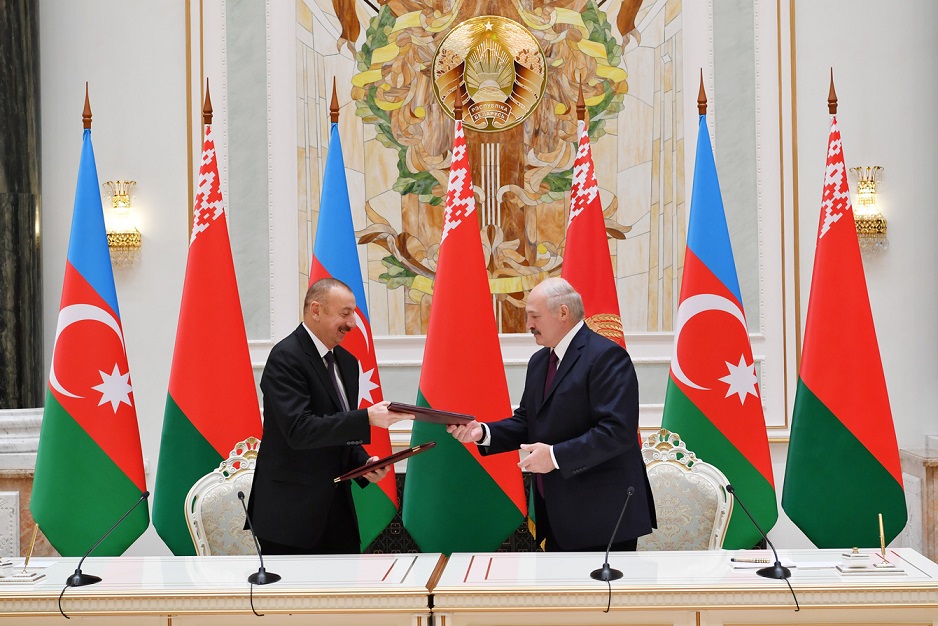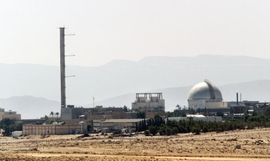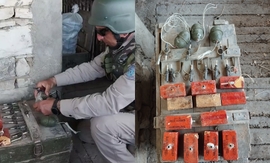Belarus may be increasing its arms and defense systems sales to Azerbaijan, as Baku looks to maintain a strategic military superiority in the South Caucasus region, where Armenia continues to occupy 20 percent of Azerbaijan’s sovereign territory.
Azerbaijan’s President Ilham Aliyev visited Belarus from November 18-19, providing momentum to expanding defense cooperation of the two former Soviet republics through inking arms deals that could include Belarusian air defense systems.
"We are very pleased with this cooperation,” President Aliyev said in a joint press conference with his Belarusian counterpart Alexander Lukashenko, according to Aliyev’s presidential website. “Both the quality and efficiency of products are at the highest level,” he said, referring to equipment such as the Polonez operational-tactical missile systems, according to the president’s official website.
“Therefore, it is no coincidence that military-technical cooperation between our countries already has a good history, fairly large volumes and a good tendency towards expansion. And it is no coincidence either that the documents signed today include a Memorandum which, in the shortest possible time, will be transformed into a contract for the purchase of another batch of military equipment from Belarus.”
Defense cooperation between Belarus and Azerbaijan includes $170 million worth of equipment bought from 2002 to 2016, according to a report by the Jamestown Foundation and data collected by the Stockholm International Peace Research Institute. The Azerbaijani military supposedly received 153 T-72 tanks, 120 D-30 122 mm artillery systems, 12 2S7 Pion 203 mm self-propelled guns, 60 BTR-70 wheeled armored personnel carriers and 11 Su-25 attack planes.
Baku’s interest in upgrading weapons systems capabilities stems from the conflict with neighboring Armenia, which has waged a war for land since the early 1990s. The two South Caucasus countries have since been at odds over the occupation of Azerbaijan’s Nagorno-Karabakh region and seven adjacent districts by Armenia as a result of a full-scale war that was waged from 1991 until the ceasefire in 1994. While the conflict is said to be ‘frozen’, war clouds are always looming as tensions between Baku and Yerevan run high.
Azerbaijan’s defense minister Zakir Hasanov made a two-day trip to Minsk in October of last year, when he supposedly signed a contract that included the sale of the Polonez multiple launch rocket system. Earlier, in June 2018, President Aliyev showed off the Polonez during a site visit to an Azerbaijani military unit. Later that month, the anti-missile system was put into operation.
The Polonez system, first made public in 2015, is a multiple launch rocket system (MLRS) that was developed in Belarus for replacing older, Soviet-era 220mm Uragan and 300mm Smerch artillery rocket systems. Its development reportedly received assistance from China, as it strongly resembles the latest Chinese A200 artillery rocket system.
Polonez is classified in the same category as the U.S.-made M142 HIMARS system, Russian 9A52-4 Tornado complex and the KN-09 MLRS made by North Korea. It can hit manpower, weapons, both armored and unarmored vehicles, command posts, as well as air defense missile systems and aircraft located in open areas and shelters. The system is built on the MZKT-7930-300 Astrologer heavy high-mobility chassis, which allows for operability on all kinds of terrain.
The launcher can perform single or salvo firing and launch a full salvo of eight 300mm rockets within 50 seconds. Each rocket can be fired at separate individual targets, meant to engage at least eight targets simultaneously. The system can be deployed in eight minutes and redeployed in just two minutes to avoid counter-fire.
Polonez has two sets of quadruple launchers housing 300mm solid propellant rockets in ready-to-launch positions. Three types of warheads – high-explosive, high-explosive fragmentation and fragmentation armor piercing cluster – warheads can be mounted to each rocket, depending on the mission. Rockets are guided with global navigation satellite system (GNSS) or an inertial navigation system (INS) in order to deliver a high level of hitting accuracy in long-range targets located between 50 and 200 km.







 The Mine Action Agency of Azerbaijan (ANAMA) reported on Thursday the discovery of a significant amount of explosives in the Khojavand district of ...
The Mine Action Agency of Azerbaijan (ANAMA) reported on Thursday the discovery of a significant amount of explosives in the Khojavand district of ...
 Iran has refuted reports of alleged damage to Shimon Peres Negev Nuclear Research Centre located southeast of Dimona, Israel, during the recent air...
Iran has refuted reports of alleged damage to Shimon Peres Negev Nuclear Research Centre located southeast of Dimona, Israel, during the recent air...
 Iran’s Foreign Minister, Hossein Amir-Abdollahian, has labeled a foiled Israeli drone attack in certain parts of the country as a "failure" for Isr...
Iran’s Foreign Minister, Hossein Amir-Abdollahian, has labeled a foiled Israeli drone attack in certain parts of the country as a "failure" for Isr...



